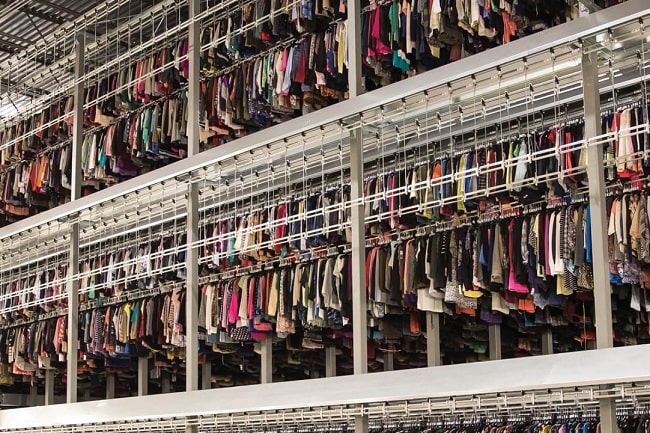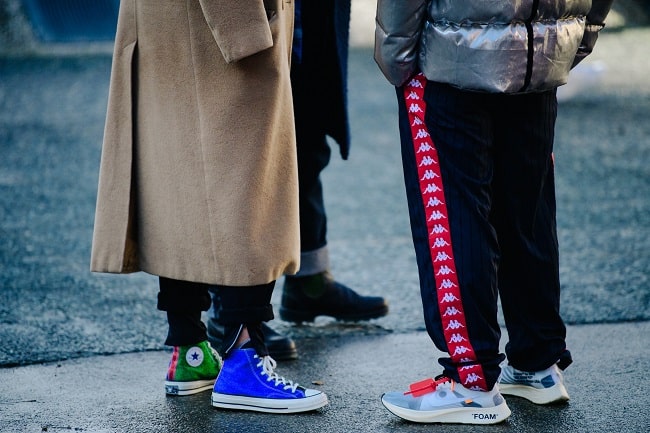1
HOME > Trends >
WHY FAST FASHION IS UNDER PRESSURE TO CHANGE
Written by Poppy Jones in Trends on the 8th May 2019

From catwalks to closet, social media has changed the way the fashion industry works by speeding up the process through demand which has led to the birth of the buzz phrase “fast fashion”. Today, it is becoming increasingly harder for us to love our clothes and wear them the same way we used to as we are being faced with the harsh insights into the detrimental ways in which our clothes are being produced. Although all of the trendy yet inexpensive finds might seem easy on your budget and confidence, the world is paying a high price.
So, What is Fast Fashion?
In order to move past fast fashion, and into a more sustainable fashion movement, it is important to understand what it really means, so that everyone is on the same page about exactly what we are pushing against. Fast fashion is essentially the accelerated rate at which trends appear in store, including the approach to design, creation and marketing of a product. Each process is sped up to ensure new trends can be received by consumers as quickly and as cheaply as possible. Although this may seem beneficial to consumers, its effects are detrimental to the planet.

Social Media
Social media platforms - Instagram being the main culprit - have become the main place for people to seek lifestyle and fashion inspiration. With an abundance of partnerships and celebrity or influencer brand deals, it is no surprise that social media has caused a prominent spike in fast fashion. Thanks to advances in technology like live streaming on Facebook, Instagram and Snapchat, consumers can see fashion shows instantly which makes everything so instantaneous, including their demands for new season fashion. People no longer have the patience to wait 6(+) months for a new trend anymore, and the quicker a retailer can respond to a trend, the better the profitability for the business.
The Environment
Tie-dye and neon pallets are two of the many latest trends this year and are appearing in most fashion garments today. But, many of these effects are achieved through the use of highly toxic chemicals. The cheap dyes used to colour the cheap fabrics are the second largest polluter of water globally. Polyester is the most popular fabric used by fast fashion brands because it is convenient, cheap and washable. Unfortunately, when polyester garments are washed, tiny microfibres come loose and end up contributing to the rapidly increasing levels of plastic in our oceans. These microfibres are so small that they pass through any water treatments plants without a problem, and they aren’t biodegradable. This poses a serious threat to aquatic life.

Slow Fashion Movement
The slow fashion movement is a direct response to fast fashion and was created by designer Kate Fletcher who invented the term in 2008, although it is still not at the forefront of many consumers' minds. Slow fashion shares the same definition with sustainable fashion which ultimately means being purposeful when buying clothes, and realising that less is more. It should be a conscious choice to buy better-quality items such as a luxury belt, less often, that will last longer - fashion choices that are environmentally and ethically driven, as opposed to solely trend-lead. The fast fashion industry has come under fire in recent years for its impact on the environment, as well as suggestions that the demand for cheap clothing is driving poor working and labour conditions.
What Are Brands Doing?
When companies ship products, companies emit lots of damaging gases into the air and waste natural resources. If you buy products that were made or harvested locally, you can eliminate this issue which will have a significantly positive impact on the environment. Where possible, try and buy products that are in recycled packaging as this will decrease the demand for the production of harmful packaging by brands to the manufacturers.

The Pressures On!
The fast fashion industry reflects the demand for speed in retail trading. Over the past 3 years, the movement of styles from fashion shows to consumers has increased by 21%. As the demand for sustainability continues to grow, fast fashion brands have started putting ethical practices in place. PrettyLittleThing has introduced a clothing range from recycled materials and fabrics. ASOS have created their own vintage line from special finds and recycled products, as well as sourcing their favourite items from vintage stores around the world. H&M has recently launched its ‘conscious collection’ for Spring 2019, which comes as part of its wider goal of using 100% sustainably sourced cotton by 2020. Meanwhile, Zara and others have pledged to boycott Ubek cotton, which is an industry linked to forced labour. The Better Cotton Initiative promotes sustainability and best practices for workers in the cotton industry. Businesses are also beginning to renew their packaging methods to come up with more sustainable choices.

In a nutshell, the most that shoppers and brands can do is buy smarter, care for and repair clothing where necessary and keep using your existing threads for longer. If you're having a clear out try and donate them to charity shops instead of throwing them away.
When buying new clothes are you interested in knowing who made it and how it was made? #Fashion
— Menswear Style (@MenswearStyle) May 8, 2019
Trending
2
3
4
5
6
7
8
9
10









